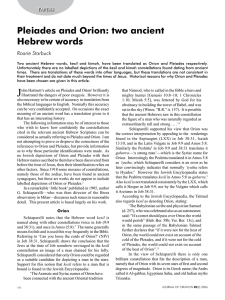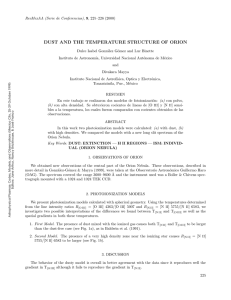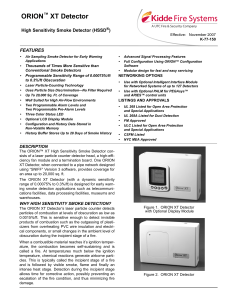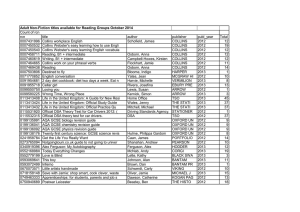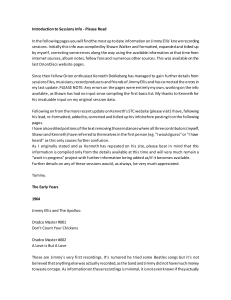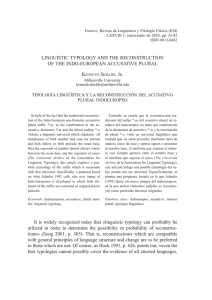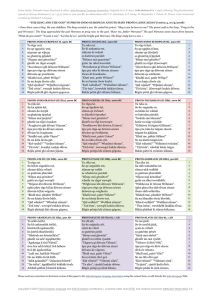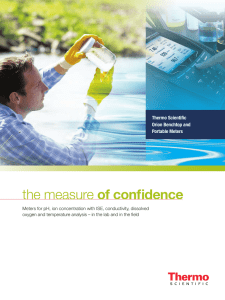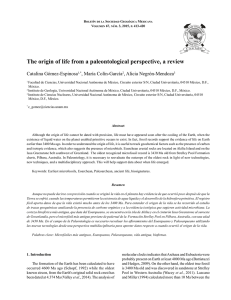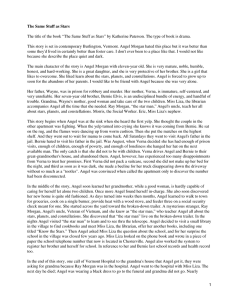The Oldest Indo-European Calendar
Anuncio
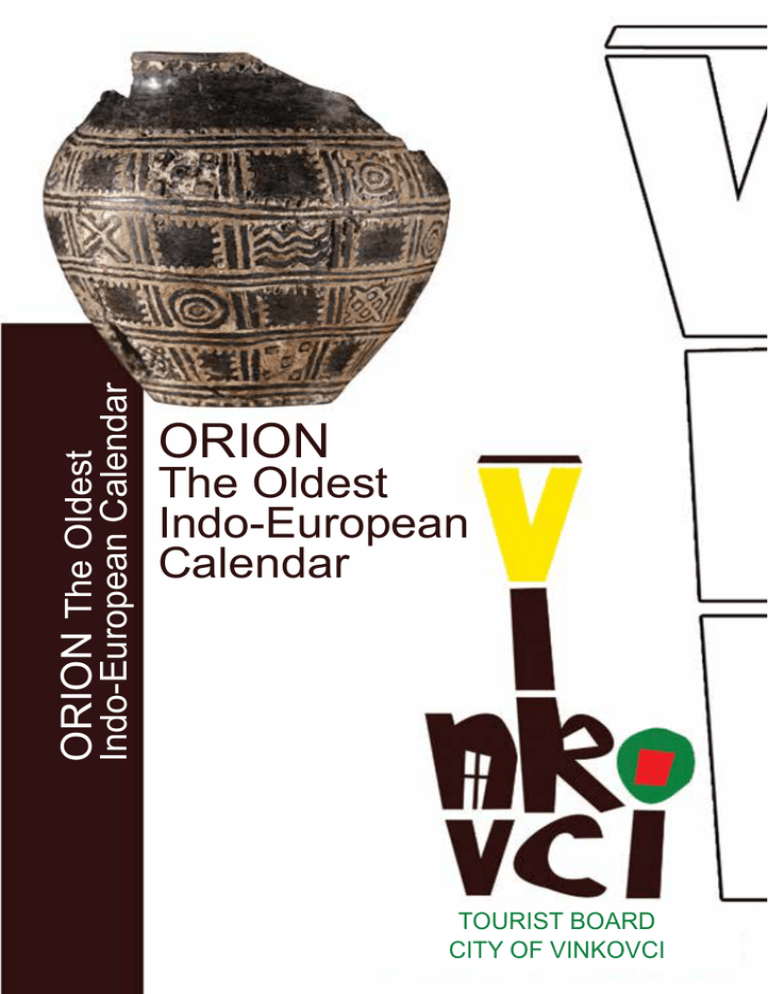
Indo-European Calendar ORION The Oldest ORION The Oldest Indo-European Calendar TOURIST BOARD CITY OF VINKOVCI VINKOVCI - CROATIA, 45°17’15.28”N, 18°48’10.63”E At the beginning of the third millennium B.C., the right Danube bank in Eastern Croatia was inhabited by the population of the Vučedol culture. This was the time of the Sumerian period in Mesopotamia, Old Kingdom of Egypt and early Troy period. So, it was in that time period that the oldest Indo-European calendar was created, today known as the “Orion”. The entire range of ornaments on the Vučedol vessels is based on the Sun and the astral symbolism, and Venus and Mars. The engraved ornament on the vessel which was recovered from the Vučedol layer in Vinkovci and whose creation dates from before the year 2600 B.C., represents the most complete Indo-European calendar which is based on the astral symbolism with pertinent constellations to all four seasons. Although it was created in the same time period as the Sumerian and Egyptian calendars, it does not represent their replica, since it is based on the 45th parallel. The climate conditions which correspond to that latitude have four seasons as a consequence. The constellations which represent specific seasons are marked as during the time of twilight as the first features on the evening sky (Orion, the Pleiades, Gemini, Pisces, Cassiopeia, Cygnus). The usual imagery of the Sun, without any imagery of the Moon, confirms the complete absence of the lunar symbolism which is in fact the Indo-European characteristic. In the Vučedol culture, the year used to begin with the spring equinox, when the Sun symbolically used to step in the place of the most important winter constellation - Orion. That is to say, during that night, the Orion belt (three stars) would become visible for a short time for the last time in the winter sky, then disappearing for several months. That congruity, the disappearance of Orion at spring equinox, was first recorded by the inhabitants of the Vučedol culture. It helped them determine the first day in their year with the actual number of days of the yearly revolution of Earth around the Sun. The archeologists recovered this vessel on March 21st, 1978 at the site of the present-day Hotel Slavonija. Twenty years later, it was determined that the engraved ornaments represent the constellations which dominate the night sky above Vinkovci, and specifically: 1. Spring: Orion and Sun 2. Summer: the Pleiades, Cassiopeia and Cygnus 3. Autumn: the Pleiades, Gemini and Pisces/Pegasus 4. Winter: the Pleiades, Gemini, Pisces/Pegasus, Cassiopeia and the dominant winter constellation Orion According to professor Aleksandar Durman, who led the excavation project at that time, the present-day representation of the Orion vessel in the pedestrian zone in the center of Vinkovci has symbolic meaning: “Here in the heart of Vinkovci, Europe’s oldest city, stand together the symbols of space, time and civilization: 1. the Matija Antun Reljković Grammar School building directly behind us, represents knowledge, 2. on the opposite side, in front of us, is the Vinkovci City Museum which represents tradition, 3. to the right, the St. Eusebius and Polion Church which symbolizes eternity, 4. to the left, the City’s most important road, the Bana J. Jelačića Street, represents life. The citizens of Vinkovci have a reason to the proud of the prehistory and history of their city and their Bosut river - the Euphrates and Nile of Europe - on whose right bank used to sprout and develop a European civilization!” Published by: Vinkovci Tourist Board Trg bana Josipa Šokčevića 4 32100 Vinkovci Tel/fax:+385 32 334 653 e-mail:[email protected] www.tz-vinkovci.hr Text by: prof.dr. Aleksandar Durman Photos by: Darko Puharić English translation by: Dragan Trajer Graphic design: Design studio D, Vinkovci WINTER AUTUMN SUMMER SPRING ORION The Oldest Indo-European Calendar Editor: Martina Matković, dipl.oec. You can see the “Orion” vessel itself at the Vinkovci City Museum, where the museum staff will offer you an abundance of interesting data from the rich history of Vinkovci. For the information regarding the working hours of the Museum and the prices, please visit www.muzejvk.hr .
